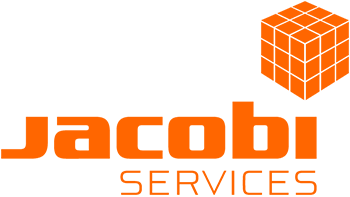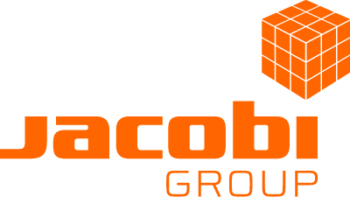The design of an activated filter will determine the energy consumption and the activated carbon usage of an adsorption treatment system. Jacobi Services offers a complete range of compact mobile filters of the type EcoFlow™ designed for optimal flow distribution, low pressure loss and for optimum activated carbon consumption. The design or selection of a mobile activated treatment system and the auxiliary equipment depends on a combination of different selection criteria:
Activated carbon type
The selection of the virgin activated carbon or reactivated carbon type mainly depends on the chemical nature of the impurity that needs to be removed and the recycling options that can be considered. In air purification systems we often make the distinction between
The selected size of the product depends on the maximum allowable pressure drop and the selected adsorption system. Certain sites have pressure loss concerns because of the exiting equipment that is installed. The activated carbon selection (3, 4, 5mm and 3×6 or 4×8 US Mesh), as well as the equipment type and configuration (parallel or series installation) can be selected in such a way that we can overcome the pressure loss constraints in most cases.
https://www.jacobi.net/glossary/
The content below is intended as a guideline and not as a substitute for contact with our experienced technical staff.
Flow rate
The air flow rate is usually expressed as m³/h and will determine the type of mobile adsorber unit and the adsorber configuration. Jacobi Services offers a wide range of EcoFlow™ mobile filters for air and gas treatment capable of handling flowrates of up to 40,000m³/h per filter, including the suitable activated carbon for the application.
Gas or air temperature
The temperature or temperature range of the airstream has not only an impact on selection of the removal technology, but also on the applied materials of construction.
Most importantly in the gaseous phase, adsorption occurs by arresting the kinetic energy exhibited by the target pollutant(s). As these molecules will possess greater kinetic energy at higher temperatures, the ability of the carbon to arrest this energy (converted to heat as described below), is compromised at the short contact times used (usually <1 second). In conjunction with the need to dissipate the heat of adsorption, a normal working temperature of <40°C is recommended for optimum adsorption in the gaseous phase. The effect at operation of 20°C and 50°C can be seen in the isotherms indicated below for vinyl chloride monomer (VCM) for both coal and coconut shell based activated carbons.
The adsorption isotherm expresses the impurity loading of the activated carbon as function of the concentration at constant temperature. Figure 1 indicates a higher loading at a higher impurity concentration and lower impurity loading at higher temperature. It is therefore recommended to work at the lowest possible temperature.
Operating pressure
Mobile industrial filters are designed to operate under a well-defined pressure range, as indicated on the technical datasheets. The maximum design pressure will limit the maximum operating pressure. It is advisable to install an over-pressure safety device to protect the mobile filter unit against potential damage during exposure to higher pressure as designed.
Sometimes mobile filers are used under suction conditions in order to avoid leakage of impurities into the surrounding atmosphere. Therefore, it is advisable to install an under-pressure safety device to protect against vacuum when the gas to be treated is sucked through the filter.
Emission operating regime
The operating regime determines the bed life and how much time the purification technique must be operational, i.e. which regime follows the emission.
- Continuous
- 16 hours a day, 5 days a week
- 8 hours a day, 5 days a week
- Sporadically
It is advised to remove the excess heat of adsorption before taking the mobile filter out of operation. This can be done by rinsing the filter with ambient air. Please contact your local technical representative for further information.
Contaminant concentration
Activated carbon adsorption is an exothermic process that can heat up an industrial filter. It is the flow of gas going through the carbon bed that dissipates this heat. This prevents heat accumulation and potential forming of hot spots in the bed. Hot spots may lead to auto-ignition of the activated carbon itself. A normal maximum concentration of 25% of the Lower Explosion Limit (LEL) of the contaminant is advised.
Bed life and adsorber volume
The gas phase isotherm is a good tool to determine the annual carbon consumptions as it gives the impurity loading as function of the inlet concentration. The impurity loading depends on:
- The temperature
- The higher the temperature the lower the loading
- The operating pressure
- The higher the pressure the better the loading
- Relative humidity (RH)
- Some impurities such as propan-2-ol will adsorb better at 70% relative humidity compared to adsorption at 0% RH
- Competitive adsorption of other molecules
The desired bed life and annual activated carbon consumption are often the determining factor for sizing an adsorption system. The annual activated carbon consumption depends on the impurity flux (Concentration x Flow), emission operating regime and activated carbon type.
Gas phase isotherms show that that higher impurity loadings are obtained at higher concentrations. In addition to the targeted molecules we also must consider the other compounds in the air for bed life expectancy calculations as they can also occupy adsorption space in the activated carbon.
The selected activated carbon volume or superficial contact time are often also based on:
- Minimum superficial contact time needed for the application
- Desired bed life or exchange frequency
- Usually filters are designed or selected to have a typical lifetime of 1 month to 1 year
- Type of standard packaging
- Industrial adsorption filters are usually designed to contain a multiple of standard packaging units
- The size of mobile filters also depends on the transport of spent carbon
- Transport weight of the spent material and overall dimensions of the filter
- Some virgin or spent activated carbons do not pass UN standards for self-heating and transport packaging are, therefore, limited to a volume of maximum 3m³
Superficial contact time (SCT)
The superficial contact time depends on the type of filter, superficial contact time for the application and the activated carbon size that is used. The minimum operating conditions are summarised in table 1.
| Type of filter | Thin bed (cylindrical or annular design) | Thick bed |
| SCT (s) | 0.2-0.5 | 2-3 |
| Pellet size (mm) | 3 | 4 |
The pellet or grain size have an impact on the required superficial contact time.
Linear velocity (LV)
Linear velocities of 0.05 -0.5m/s are usually applied in activated carbon filters. This will give a good air distribution in the filter and will prevent preferential air flow through the filter. In addition to that it will also give a good removal of the heat of adsorption and the reaction heat of chemisorption. If there is any risk in hot spot formation or bedfire then a minimum of 0.1m/s should be applied. For more information please contact your local technical representative.
Humidity
The humidity of the air stream is a very important design parameter.
- Water droplets or mist
Aerosols are an extremely fine mist of solid or liquid particles in the air stream. The risk of aerosols in the air stream increases with very moist or oily air. Water droplets will fill up the pore structure of any activated carbon which leads to performance decrease of the system. This moisture can be managed by coalescing or knock-out pots (demisters) to remove free water and droplets.
- Relative Humidity (%)
The relative humidity (%) of the air or gas stream is a determining factor to select the activated carbon technology. Water vapour present in the air can condense into the activated carbon bed by temperature decreases or due to water adsorption. The effect of this can be highly detrimental to the adsorption of organics as the condensed water can block access of the impurities to the adsorption pores of the activated carbon. For optimal performance of an activated carbon system for organics removal, a relative humidity of <70% in the air stream, at the point of contact with the activated carbon bed is recommended. Sometimes it is advisable to precondition the air or stream prior to sending it to the activated carbon adsorber.
Dust contaminants
The presence of small organic or inorganic dust particles in the airstream should be removed before entering the activated carbon filter. The dust concentration is expressed in mg/Nm³. It is recommended to limit the dust level to a maximum of 1mg/Nm³ in air treatment with extruded or granular activated carbon. The stickiness of dust is important in function of the possible clogging or contamination of certain dust removal techniques.
Material of construction
- The material of construction depends on:
- Corrosiveness of the treated air or gas
- Operating pressure
- Temperature
- Polyethylene (PE) filters, for example, usually resist to lower temperatures compared to steel filters
Accessibility and free space
It is important to check the accessibility for trucks, forklifts or trans pallets and free space above the filters before mobile filters are used. Jacobi services has developed lists for each mobile filter type concerning the things to be checked prior to delivery and start-up of the mobile filter units.


